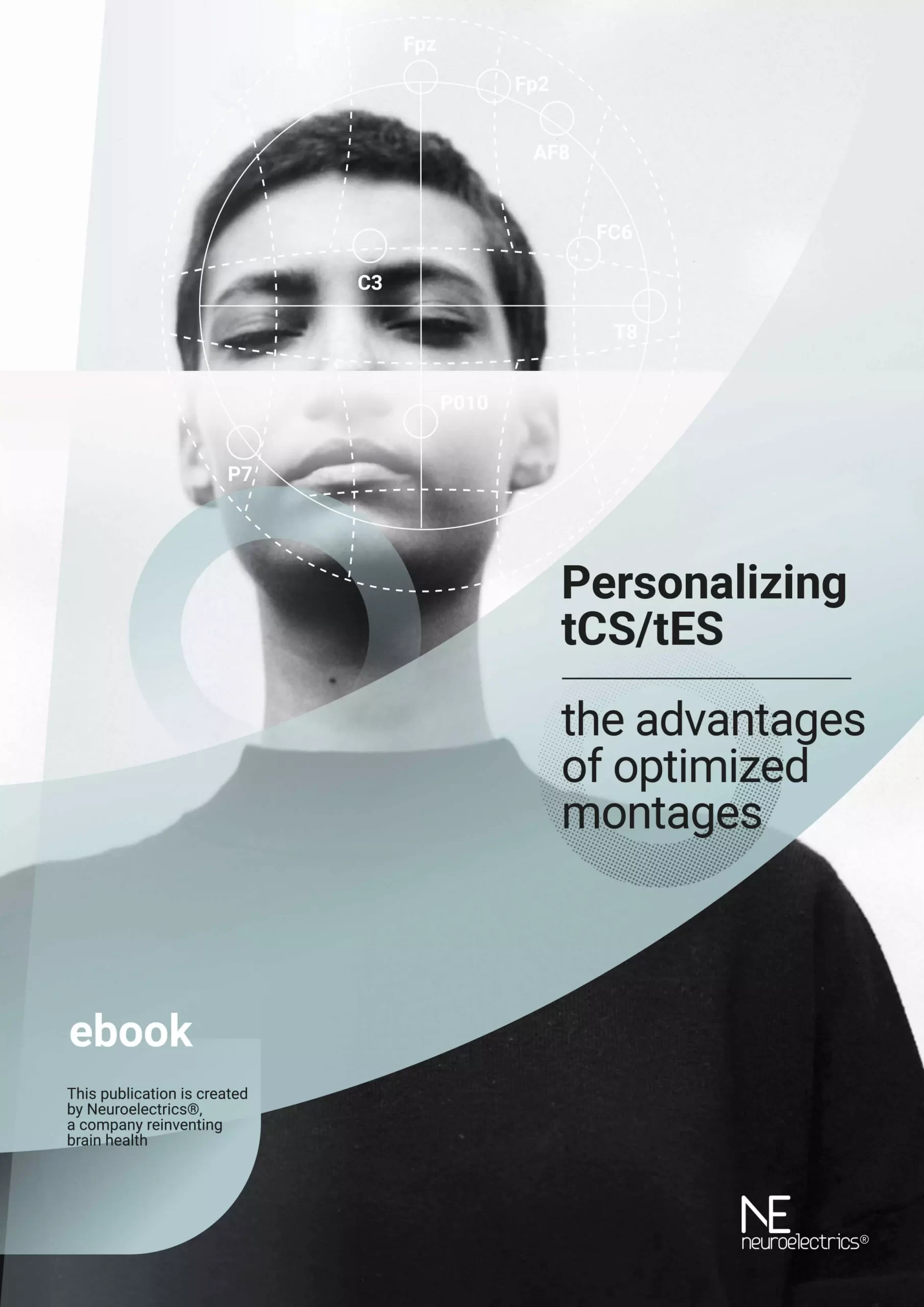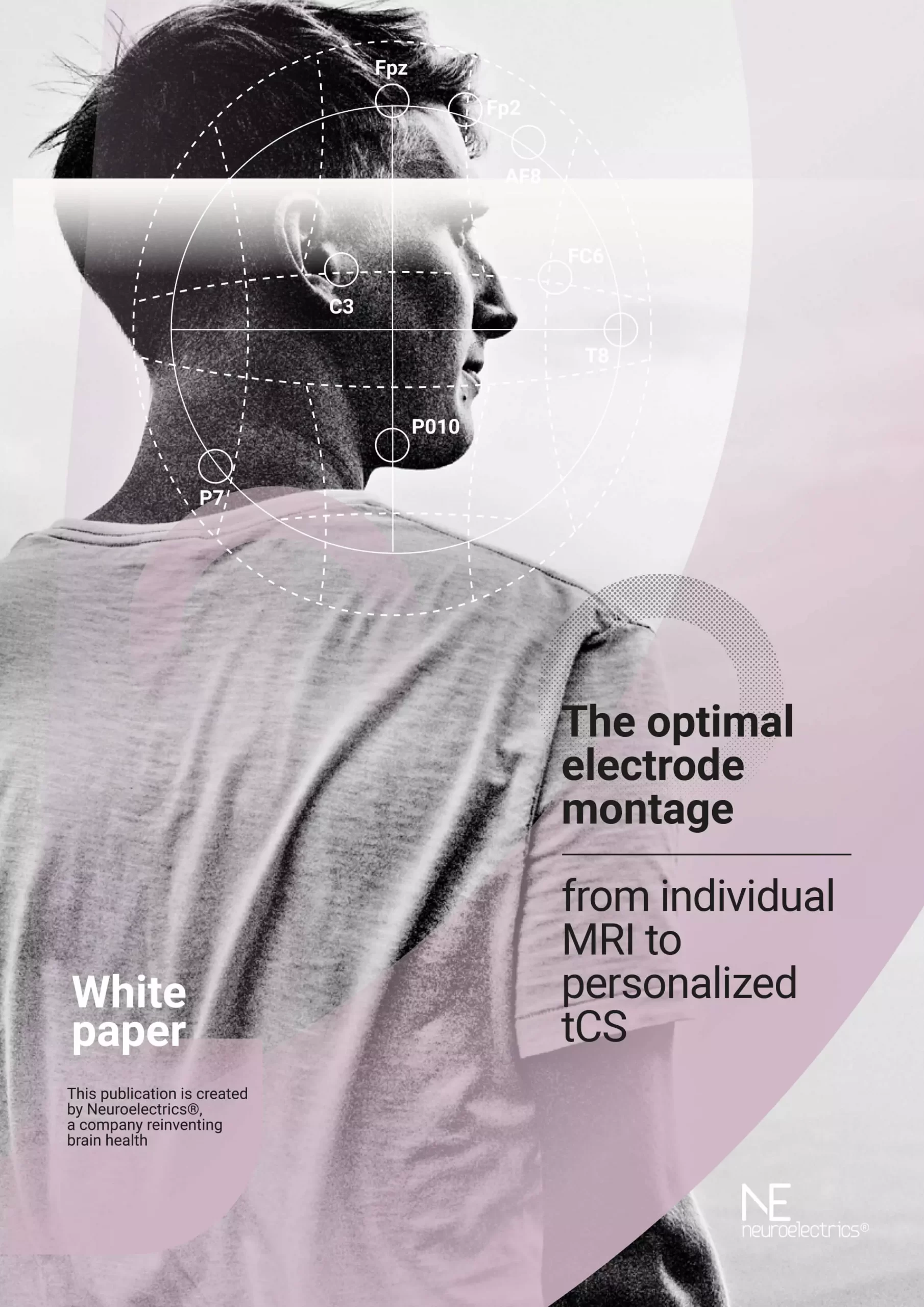Modelling Services
Modeling Services
Exclusive model-driven tES protocol optimization
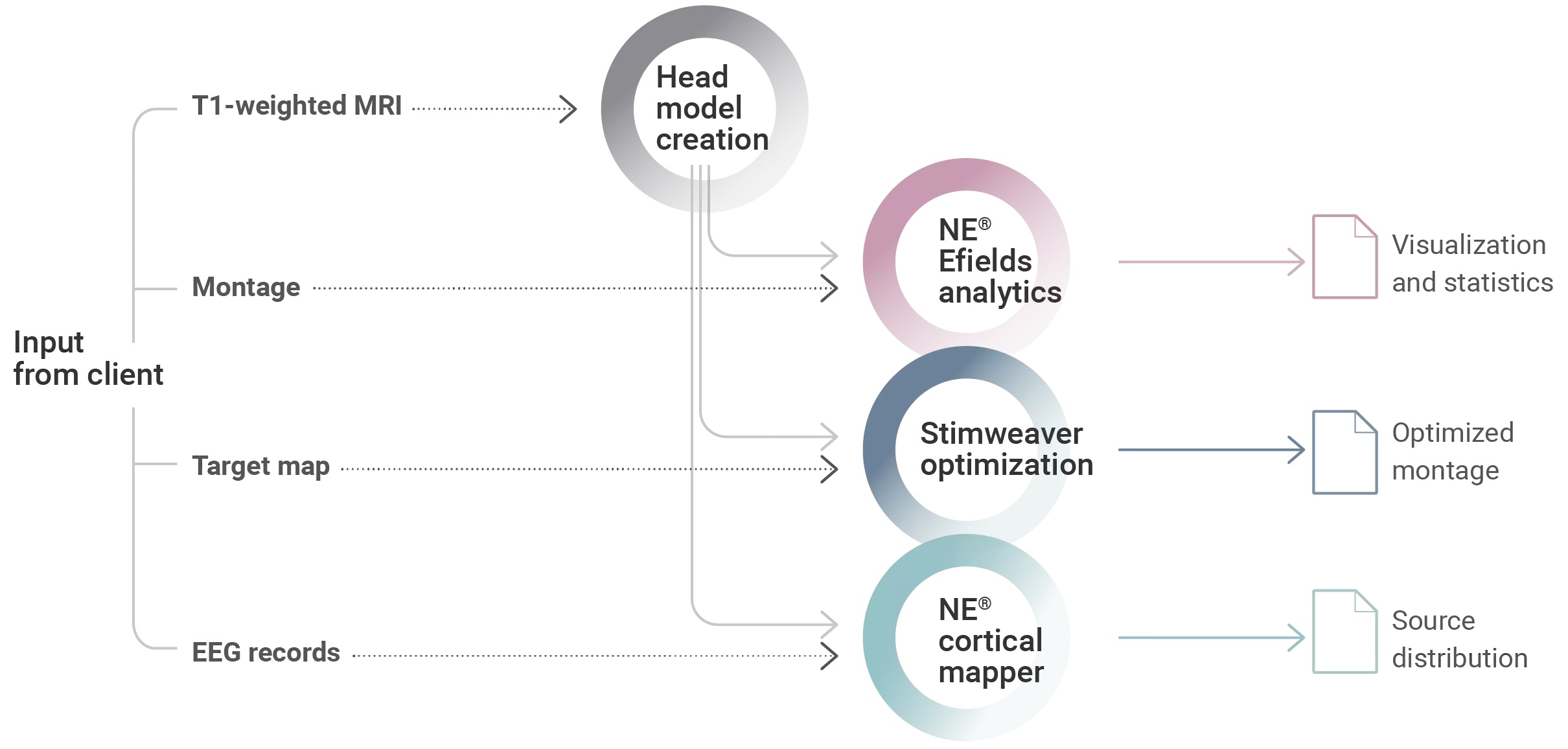
Towards personalized model-driven neuromodulation
Why is it important?
Computational head models are essential tools for maximizing the effects of stimulation and accurately interpreting the results of your study. The electrical current distribution (or equivalent electric field) in tES determines its effects on neurons. However, these currents cannot be measured in vivo using non-invasive techniques in any practical way. Computational head models that take into account subject-specific anatomy and electrical characteristics of the different tissues have thus become the gold standard to predict the electric field distribution in tES and optimize montage parameters. At NE®, we develop advanced computational algorithms to provide you with a wide range of modeling services. With your inputs, our team of scientists will tailor your protocol to your individual needs!
Head model creation
All our services require that a 3D computational head model be built. This can be subject-specific – in which case we require MRIs with specific characteristics – or based on a common template head model. The head model contains accurate geometric representations of the most important head tissues. These representations are obtained by employing powerful volume segmentation algorithms.
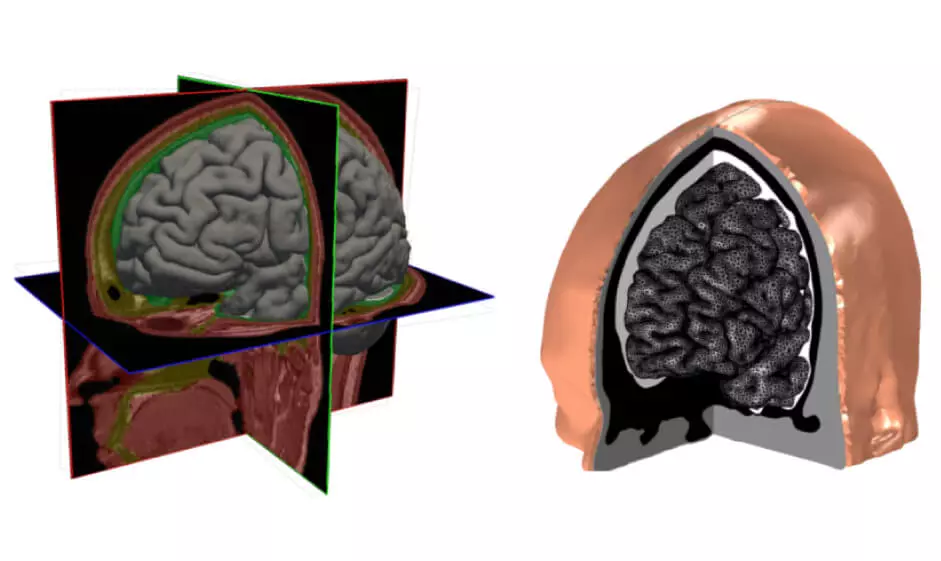
Montage optimization: Stimweaver algorithm
Do you have a specific cortical area (or network of areas) that you want to target or avoid disturbing with tES? Then draw your target map in our online Stimtargeter tool and we will work with you to determine the optimal electrode montage (electrode positions and currents).
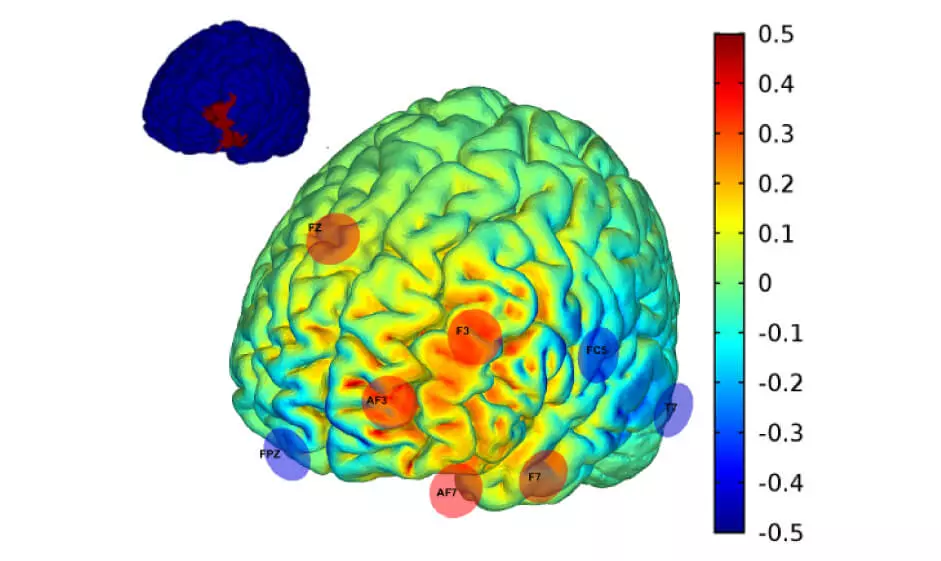
EEG source localization: NE® cortical mapper
If you are interested in analyzing brain region activation and you collect EEG records from multiple channels, this service will help you localize the cortical sources of your signals using a realistic (and, if you want, personalized) head model. We can average this activity over time, or divide it using parcellations of the cortex and/or use it to derive functional connectivity metrics for you.
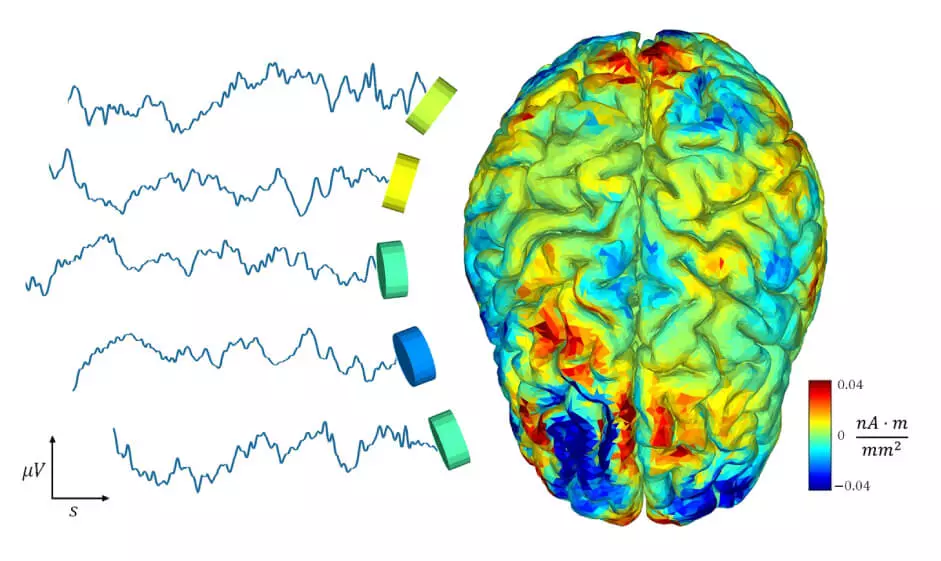
NE® electric field analytics
With this service, we provide you with quantitative information and a helpful visualization of the effects of a specific montage. With advanced numerical techniques, we calculate the electric field distribution that the montage induces in the head. This information will give you valuable insights into the effects and mechanisms of stimulation.
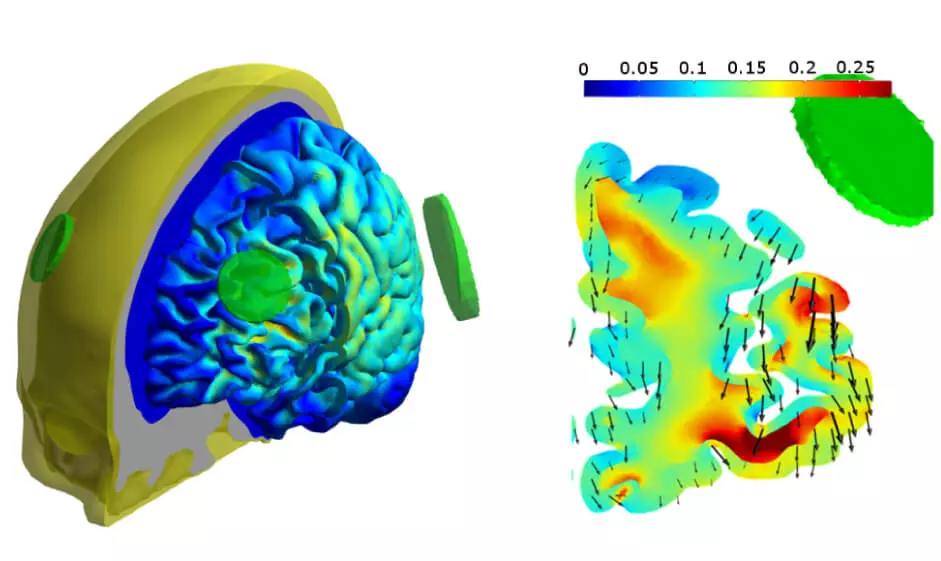
| Service | What is it? | MRI | Target | Other inputs | Outputs | |
|---|---|---|---|---|---|---|
| 1 | E-field analytics | Visualization of E-field induced by user-specified montages | Not required, unless subject-specific modeling is needed. | Not required | Electrode type, position, and currents | Montage report (1. Report with E-field analysis, 2. VTK files for 3D visualization of montages) |
| 2 | Stimweaver optimization | Montage optimization to target specific area(s) with the desired effect | Not required, unless subject-specific modeling is needed. | Specified with Stimtargeter. | Constraints on electrode numbers and currents | Optimization report (1. Report with a discussion of montage efficacy, 2. VTK files for 3D visualization of montage, 3. NIC template for easy implementation of montage) |
| 3 | NE® cortical mapper | High-resolution distribution of cortical sources over time from EEG (~10 mm2 resolution on the cortical surface) | Not required, unless subject-specific modeling is needed | Not required | Electrode type and positions. Optionally: parcellation name; EEG signals if analysis in source space is desired. | Mappers report (1. Mapper quality, 2. Inverse mapped EEG, 3. Other metrics as Functional or Effective Connectivity profiles) |

